Choosing the Right Container Size for Your Cargo
With around 90% of goods shipped internationally finding their way to the final destination through sea transport, it is imperative you choose the right container size and type for your cargo. Choosing the wrong container size may literally make or break your shipment, as in the case of a ruptured flexitank for oversized bulk liquid cargo. In this guide, we will cover:
- The different type of containers and the commodities they carry
- Calculating freight volume in 8-steps
- Translating the freight volume calculated to the correct container size
- Choosing the container type for out-of-gauge cargoes and bulk liquid cargoes
1) Different Containers for Different Cargoes
Briefly, for conventional cargoes that can be compartmentalized, palletized or stored without its integrity deformed, the 20FT or 40FT containers are the right containers to load your cargoes with. In addition, there is a 40 HC container that allows space for “tall” cargoes that don’t normally fit the 40” conventional container.
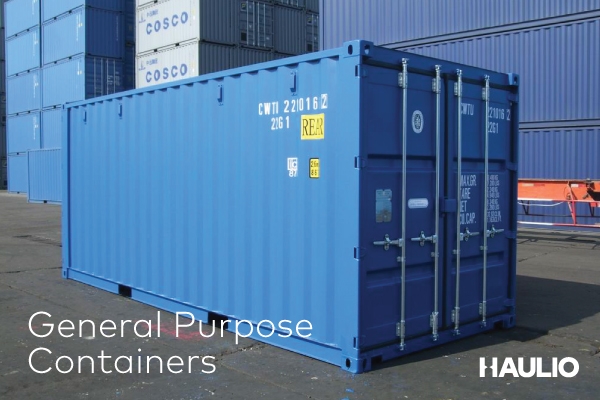
For cargoes such as frozen food or fruits and vegetables, shippers will use reefer containers, which are simply 20FT or 40FT containers but with refrigeration feature enabled. The temperature and humidity can be pre-set and will be monitored by the vessel crew en route to the destination.
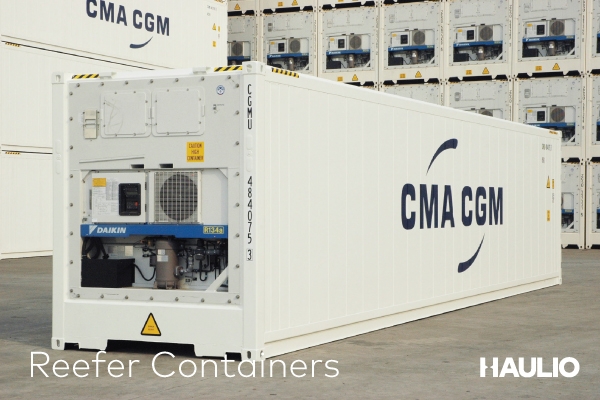
For out-of-gauge cargoes, which are cargoes with custom sizes and specifications and do not normally fit into either a 20FT or 40FT, the flat-rack container can be used. Freight forwarding companies will typically lash and lock the out-of-gauge cargo safely onto a flat-rack, and this is why it is called a flat-rack container.
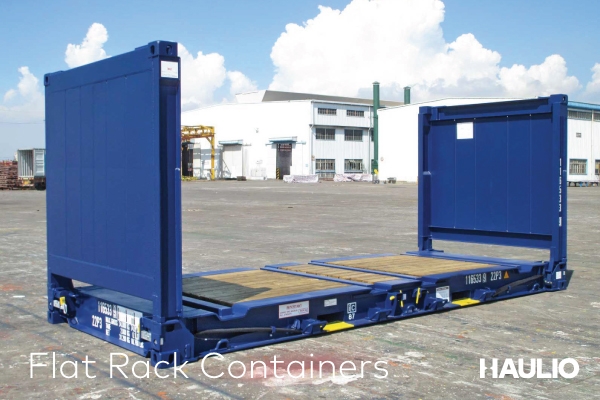
Bulk liquid cargoes such as oil or gaseous cargoes such as LPG can be stored in flexitanks. These are approved tank storages that is fitted onto a container frame for safe transportation of bulk liquid or gaseous cargoes.
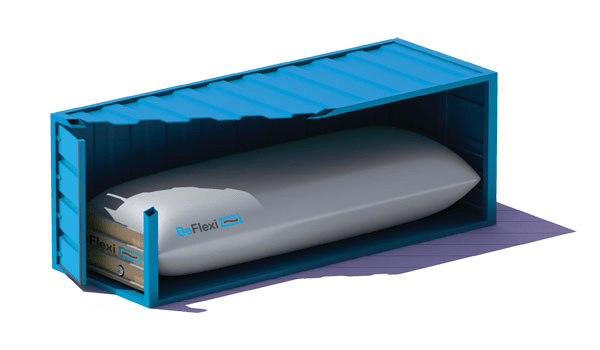
2) The 9 Steps to Calculating Freight Volume
Step 1: Use a tape measure, and measure the length, width, and height of the carton, box or pallet.
As an example, we will use a measurement of:
61cm (length), 45cm (width), and 25cm (height).
Step 2: Convert the cm to inches (Note: For the purposes of this article, we will be using the American standard to determine how many boxes can fit into a conventional container)
In this case 61 cm = 24 in, 45cm = 18in and 25cm = 10in
Step 3: Multiply the length, width, and height of a box to determine the volume.
In our example, 24 * 18 * 10 gives you 4320 cubic inch (volume).
Step 4: Convert cubic inch to cubic feet by dividing the total volume in cubic inch by 1728.
In this context, we have 4320/1728 = 2.5 cubic feet.
Step 5: Multiply the number of boxes by the volume of a single box.
For simplicity, let’s assume 200 boxes. The total volume is thus 200 * 2.5 = 500 cubic feet.
Step 6: If your shipment has a variety of sizes and shapes, simply calculate the volume for a single box, convert it to cubic feet, then multiply by the number of boxes, and lastly, adding it to the total freight volume.
Step 7: With volume calculated, now it’s time to calculate the total weight of the shipment.
Assuming the weight of a box is 15lbs, simply take 200 * 15 = 3000 lbs to get the total shipment weight.
Step 8: Convert the shipment weight from pounds to kilograms by multiplying the number of pounds by 0.45359237.
In this context, 3,000 x 0.45359237 = 1,360.78 kg.
In conclusion, the total volume is 500 cubic feet and total weight is 1360.78 kg for this particular shipment.
3) Translating total volume and total weight of cargo to the right container size
It is imperative to choose the right container size to avoid unnecessary extra charges or damage to the container.
Based on our example, if we have a 500 cubic feet and 1360.78kg shipment, the right container size that you should choose, according to the tables below, is a 20FT container.
| 20FT Container | 40FT Container | 40HC Container | |
|---|---|---|---|
| Interior Dimensions | 19’5″ length x 7’8″ width x 7’9″ height | 33’6.5″ length X 7’8″ width x 7’9″ height | 39’6.5″ length X 7’8″ width X 8’9.5″ height |
| Door Dimensions | 7’6″ width x 7’5″ height | 7’5.5″ width X 7’6″ height | 7’7″ width X 8’5″ height |
| Floor Space | 148.86 cu ft | 303.15 cu ft | 303.15 cu ft |
| Usable Capacity | 1169 cu ft (33.2 cbm) | 2377 cu ft (67.7 cbm) | 2684 cu ft (76.3 cbm) |
| Tare Weight (Empty) | 5181 lbs (2350 kg) | 8267 lbs (3750 kg) | 8598 lbs (3900 kg) |
| Weight (Max Payload) | 32500 lbs (14742 kg) | 44500 lbs (20865 kg) | 44500 lbs (20865 kg) |
| Weight (Max Gross) | 71650 lbs (32500 kg) | 71650 lbs (32500 kg) | 71650 lbs (32500 kg) |
This is because 500 cubic feet of total volume is able to fit in a 20FT container which maximum usable capacity is 1169 cubic feet, and the total weight of 1360.78 kg can fit into a 20FT container’s max payload of 14742kg. For the uninitiated, this is probably a Less Than Cargo Load (LCL) shipment, and will be consolidated with other shippers’ cargoes to fill up the 20FT container, by the freight forwarder.
Shippers should always note that the weight that one should not exceed is the max payload and for volume, the usable capacity.
Additional points of consideration include
- 20FT containers typically carry heavy cargoes, 40FT containers typically carry voluminous cargoes and 40HC containers typically provide additional space for “tall” cargoes
- Usable capacity is based on a volume with no empty space. In reality, it is impossible to have zero empty space between boxes and cargoes. Therefore, always try not to load near the maximum usable capacity, and allow for allowances.
- Following industry’s standard, the container is usually slightly over 80% of the recommended capacity.
- Load limits and weight limits typically differ slightly between shipping lines and countries, always do check with the local authorities and shipping line before loading.
4) Choosing the Right Container for Out-Of-Gauge Cargoes: Flat-Rack Container
As mentioned, out-of-gauge cargoes that do not fit into conventional cargo will typically have to be lashed and locked onto a flat-rack for transportation.
The specifications below are the typical (majority) of flat-rack containers in the market:
| 20FT Flat Rack | 40FT Flat Rack | |
|---|---|---|
| Tare Weight | 5203.8lbs (2360kg) | 11025lbs (5000kg) |
| Payload Capacity | 66458.7lbs (30140kg) | 88200lbs (40000kg) |
| Cubic Capacity | 1154.3 cu ft (32.7 cubic metres) | 2195.7 cu ft (62.2 cubic metres) |
| Internal Length | 19.5ft (5.94m) | 12.13m (39.8ft) |
| Internal Width | 7.8ft (2.35m) | 7.9ft (2.40m) |
| Internal Height | 7.9ft (2.39m) | 7.9ft (2.39m) |
As long as the cargo fits the internal width, height, length, payload capacity and cubic capacity of the flat-rack container, the cargo will be deemed safe to carry.
5) Choosing the Right Container Size for Bulk Liquid & Gaseous Cargoes: Flexitank
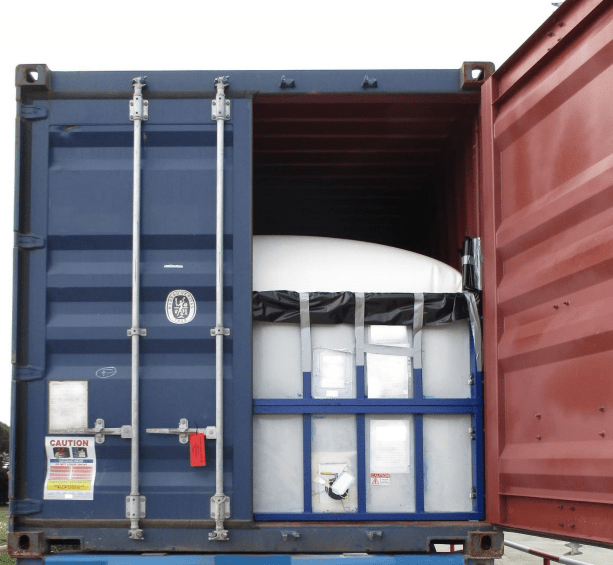
For bulk liquid cargoes and gaseous cargoes, they will be best shipped by flexitanks.
It is very important for shippers to ship their cargoes with the correct flexitank size as accidents such as rupture, spills and leaks of the flexitank may occur if an overweight shipment is loaded into a flexitank.
Briefly, a convenient formula used for calculating flexitank capacity is:
Loading weight (in kg) = capacity of flexitank (in L) × density of the stored liquid (in kg per L)
Flexitanks allow for carry between 10,000 and 24,000 liters, although the most common models are 16,000, 18,000, 20,000, 22,000 and 24,000 liters. Typically, allowance is given and the next higher dimension flexitank is chosen for safety reason.
Below is the table for the typical commodity and matching size of flexitank:
| Flexitank for glycerin transport | 20,000l |
|---|---|
| Flexitank for wine transport | 24,000l |
| Flexitank for olive oil transport | 22,000l |
| Flexitank for palm oil transport | 21,000l |
| Flexitank for polyol transport | 19,000l |
| Flexitank for latex transport | 19,000l |
Conclusion
By spending just 15 to 45 minutes doing calculation of your shipment weight and volume and choosing the right container size, you can prevent damages to the container and loss of cargo that will incur a even more hefty cost. Therefore, it is cost effective and imperative to choose the right container size for your cargo in every shipment. And when it comes to trucking your shipment from port to warehouse or vice-versa, do count on Haulio as your preferred logistics provider, rain or shine and round-the-clock.
Keen to Find Out More?
Get in touch via the form below and we’ll get back to you shortly!






